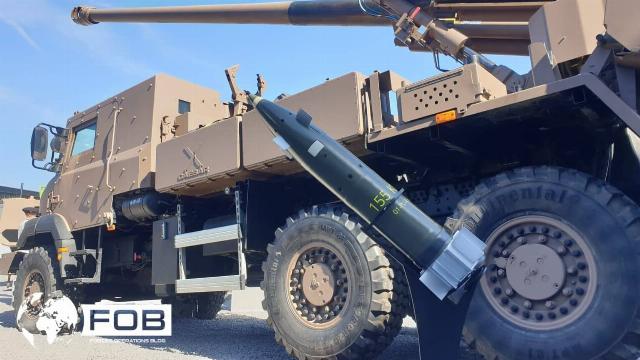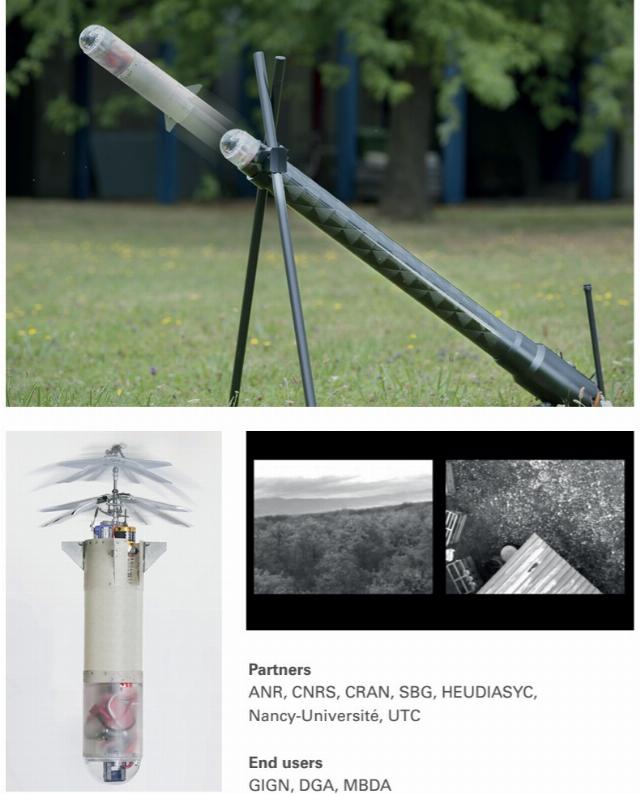According to the French edition of Intelligence Online, the secret Saint-Louis Institute, under the jurisdiction of the Ministries of Defense of France and Germany, is studying the combat experience of the military conflict in Ukraine to introduce the latest unmanned aerial vehicles, interception systems and artificial intelligence into the development.

The new French 155 mm guided artillery shell KATANA for the 155mm/52 self-propelled howitzer KNDS CAESAR at the Eurosatory 2022 defense exhibition in Paris, June 2022 (c) www.forcesoperations.com
The secret German-French Saint Louis Research Institute (Institut Saint-Louis - ISL) is rapidly developing new breakthrough systems inspired by the experience of fighting in Ukraine. At its facility in Alsace, located near the borders with Germany and Switzerland, the organization is working on anti-drone systems and artificial intelligence (AI) algorithms for use in smart ammunition, automatic target recognition systems and secure telecommunications.
According to Intelligence Online, the emphasis was immediately placed on the number of anti-drone developments and projects in the field of AI. The aim is to quickly obtain the results for verification by the French Defense Innovation Agency and the German Ministry of Defense. Additional emergency funding was provided to increase the staff of specialist engineers and to expand the Institute's existing test sites located in the Hard Forest of Alsace.
Dual leadership system
The management of the center is carried out by two key persons: the director from Germany and the director from France. The French director is Christian de Villemagne, who previously worked as an engineer at the Ballistic and Aerodynamic Research Laboratory in Vernon (Normandy), under the jurisdiction of the French General Directorate of Armaments (DGA). The German director, Colonel Michael Meinl, has been a specialist in weapons programs for 30 years. He gained experience in Franco-German cooperation after being the second person of the EU Training Mission in Mali until 2022.
The Saint-Louis Institute is under the joint management of the German and French Ministries of Defense. Its role is to provide the defense and internal security forces with technological innovations. The Institute's work covers a number of disciplines: some of them include basic research and research, others are related to conducting R&D for use with existing weapons, such as the 155-mm KATANA guided artillery shell, which has already been approved for use on CAESAR self-propelled howitzers produced by the French branch of the KNDS defense group (formerly Nexter).
The results of ISL research are used both at the European level through the European Defense Agency and outside Europe as part of the Partnership on Ammunition and Tactical Drones with the US Department of Defense Advanced Defense Research Projects Agency (DARPA) and the US Army Research Laboratory (DEVCOM ARL). Together with 400 researchers working in contact with the operational personnel of the armed forces, ISL has experience in joint development and expert innovation. Thus, the Institute cooperates with the French industrial group Thales in the field of acoustics and electronic warfare, with the French company Shark Robotics in the field of robotics, as well as with Safran, Rheinmetall Defense and Diehl Defense companies in the field of optronics and precision munitions.
Advanced technology
For almost a year, a special ISL unit has been monitoring new technological developments during the conflict in Ukraine. For example, its engineers were concerned about the possible vulnerability of French Safran-made AASM guided aerial bombs to jamming by Russian forces of the GPS satellite positioning system, which was also used by American Excalibur guided artillery shells and JDAM guided bombs.
A number of specialists have worked on projects related to small-sized reconnaissance UAVs Gun-Launched Micro Air Vehicle (GLMAV), which should be fired from a portable 80 mm launcher similar to a mortar. It is known that active tests of this type of devices are underway, which have aroused great interest among some units of the German special forces Kommando Spezialkräfte.
ISL is also developing an inertial navigation system using flight dynamics memorization and magnetometers specifically for guided munitions in order to obtain an accurate and autonomous positioning system independent of GPS. KNDS is showing great interest in this technology after gaining experience using CAESAR self-propelled howitzers in Ukraine.
The Institute is also conducting promising work on the use of acoustic threat detection technology to combat UAVs - it is inspired by the Ukrainian startup Zvook. The Deeplomatic project makes it possible to detect and identify low-visibility aerial targets in real time using sound and thermal images processed by artificial intelligence.

Promising portable unmanned reconnaissance complex Gun-Launched Micro Air Vehicle (GLMAV) (c) Institut Saint-Louis
